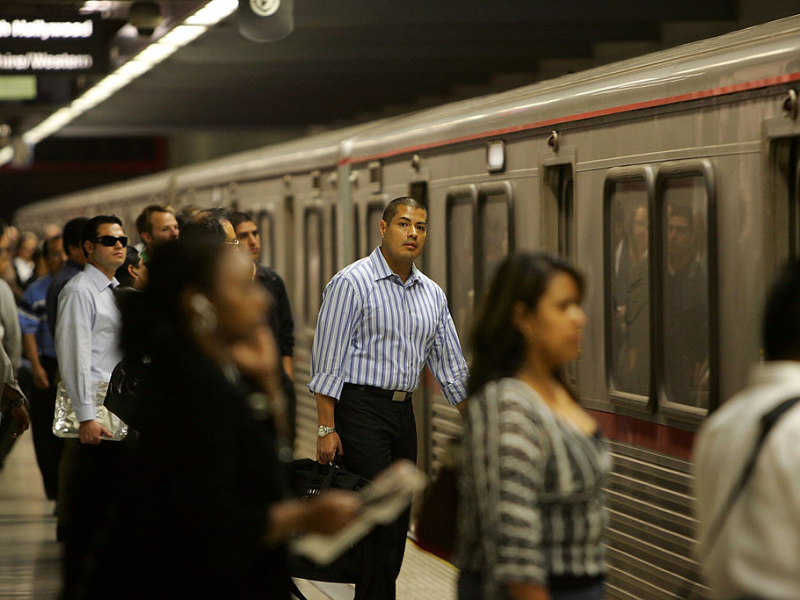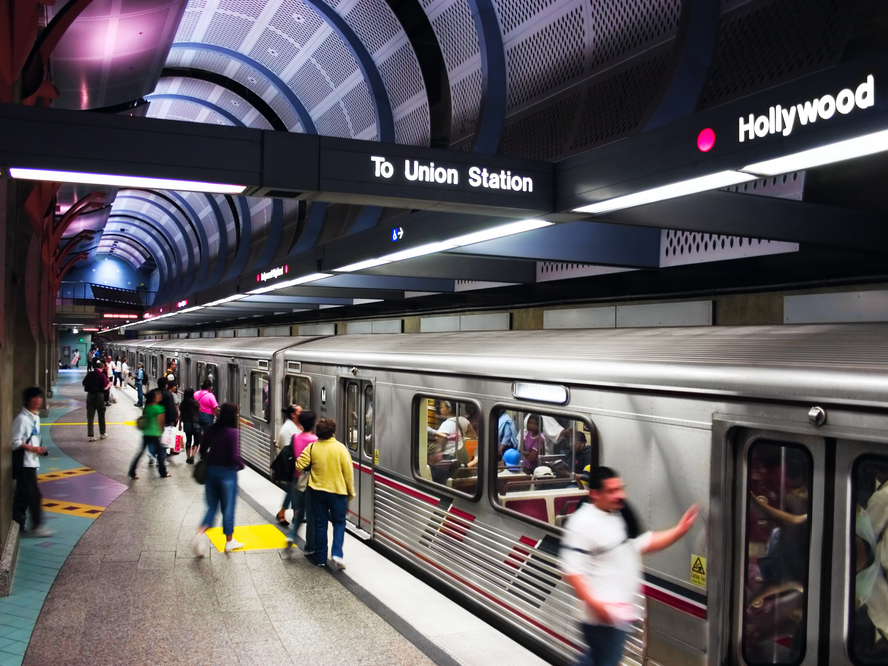- Los Angeles has a reputation as a car city, but it also has a surprisingly decent subway system.
- The Los Angeles Metro Rail system transports 344,000 riders a day throughout LA County.
- I recently rode the LA subway to work, and here’s what it was like.
- Visit Business Insider’s homepage for more stories.
When people think of getting around Los Angeles, trains aren’t usually the first thing that come to mind.
But despite its reputation as a car city, Los Angeles has a surprisingly decent subway system.
The Los Angeles Metro Rail system comprises two subway lines and four light rail lines that cover 93 stations throughout LA County. The system transports 344,000 riders on an average weekday.
Like many other LA residents, I don’t take the metro to work. And as someone who has lived in New York and abroad in northern Italy, both of which are public-transportation heavy, I will say that I was a little nervous to take the LA Metro for my commute as I did earlier this month.
Here's what it was like to ride the LA subway.
Los Angeles isn't exactly known for its mass transit. Driving is by far the most common way to get around the expansive city.
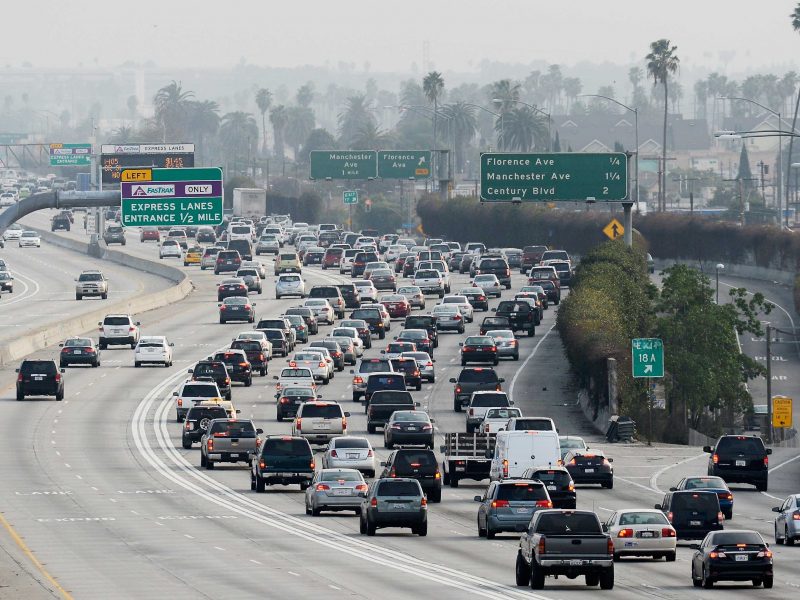
But there is in fact a subway beneath LA's streets, and it's a popular form of transportation for millions of Angelenos.
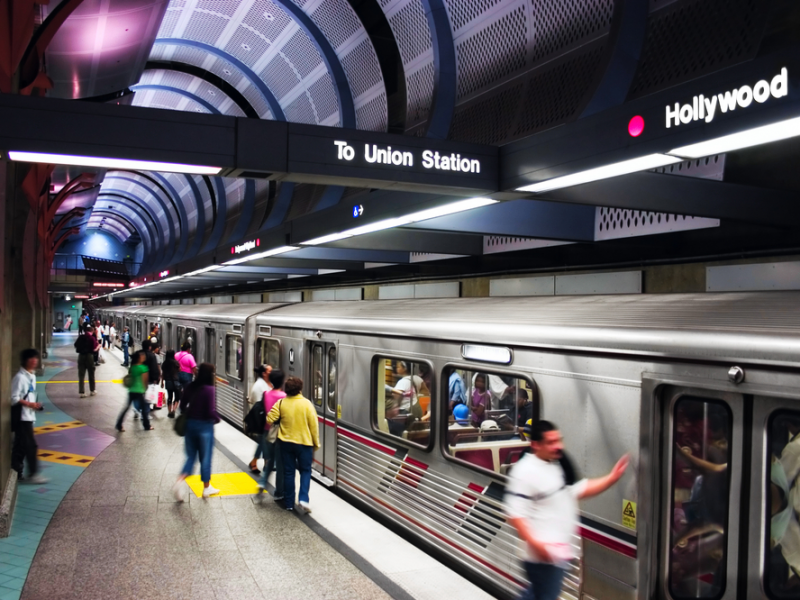
The Los Angeles Metro Rail system consists of six train lines and 93 stations across LA County. The system transported about 344,000 riders on an average weekday last year.
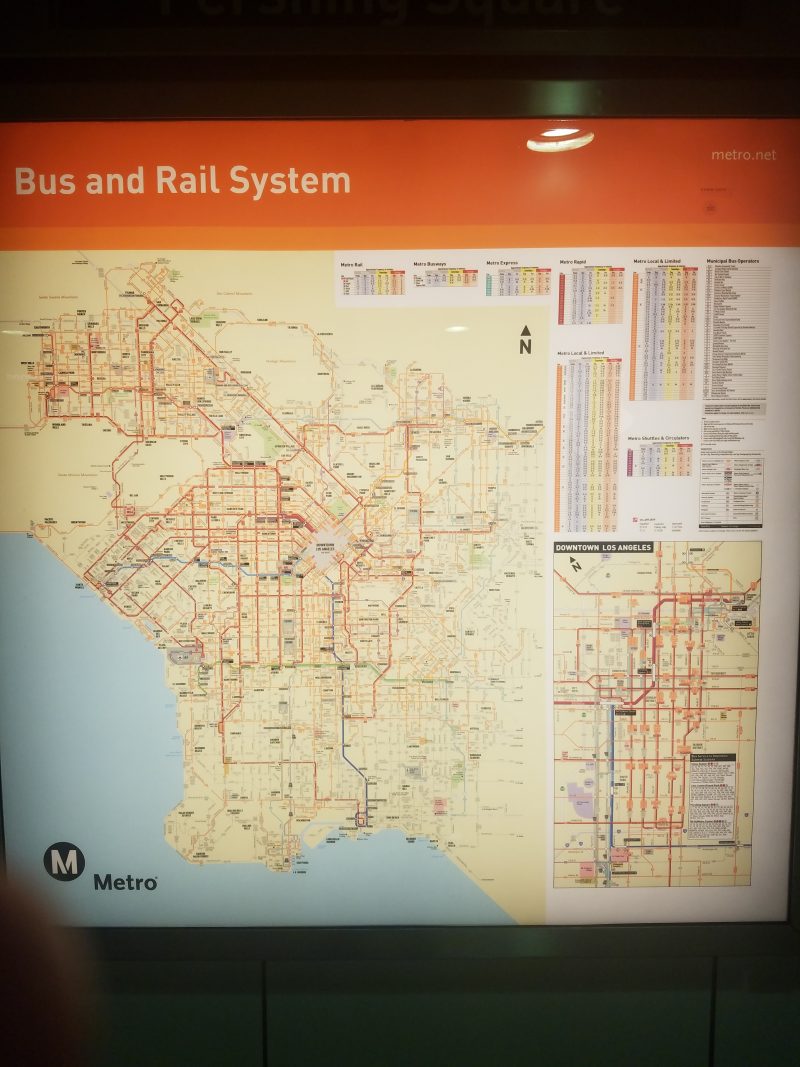
Source: LA Metro Rail
I typically don't ride the train to get to work, but I decided to try it out earlier this month.

Some of the LA metro stations have transit parking lots where you can pay to leave your car for the day.

There are machines by the entrance where you can pay a $3 daily fee.
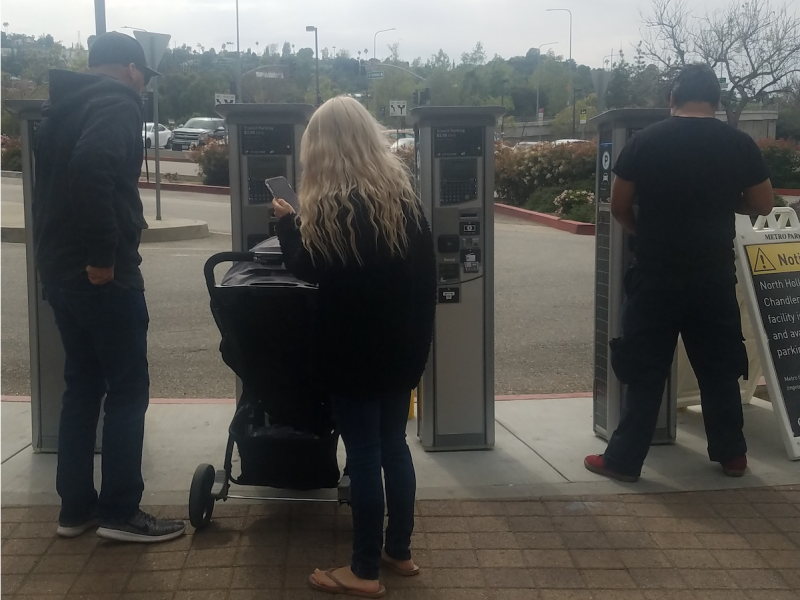
Most of the LA Metro stations are underground. So you’ll have to take the stairs, escalator, or elevator to get to the platform.

For each trip, you will need a TAP Card, a reloadable card for which you can select a one-way trip that you can reload as you wish, a one-day pass, a seven-day pass, or a 30-day pass.

A single one-way fare costs $1.75. Meanwhile, a one-day pass costs $7, a seven-day pass costs $25, and a 30-day pass costs $100.
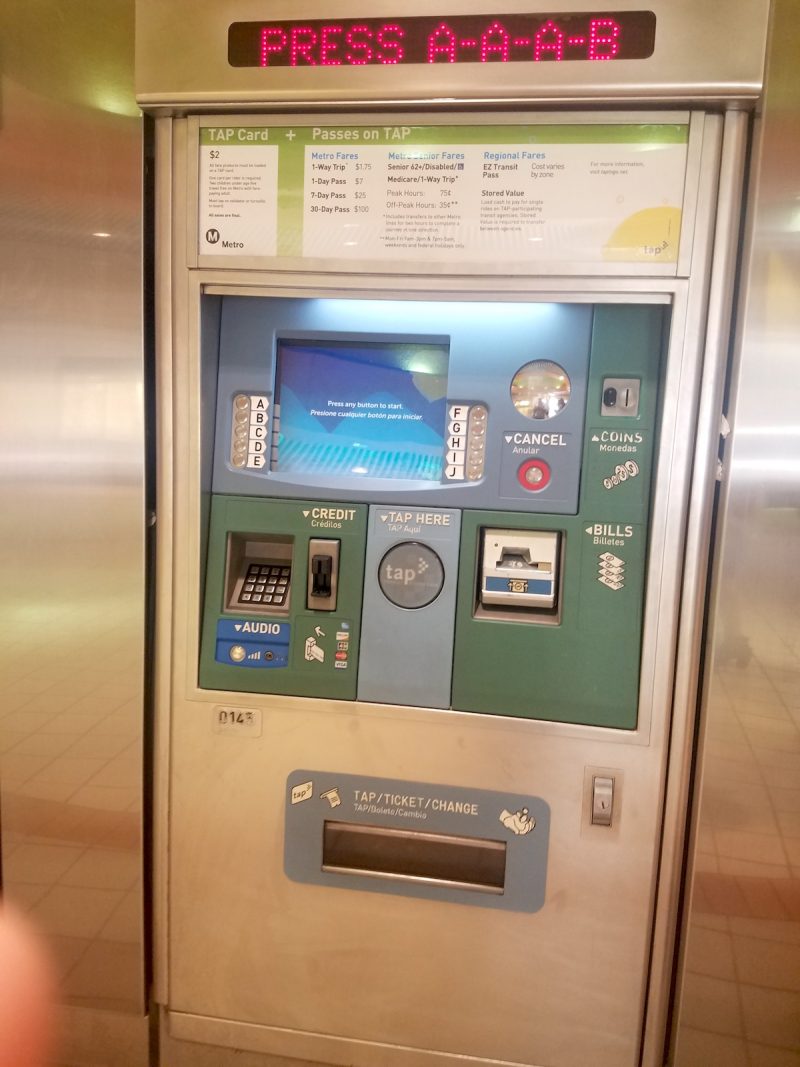
Source: LA Metro
There was hardly anyone in line for tickets when I visited, but that's not always the case during weekday rush hour.

The LA Metro system stations are decorated to showcase the city's colorful history and art.
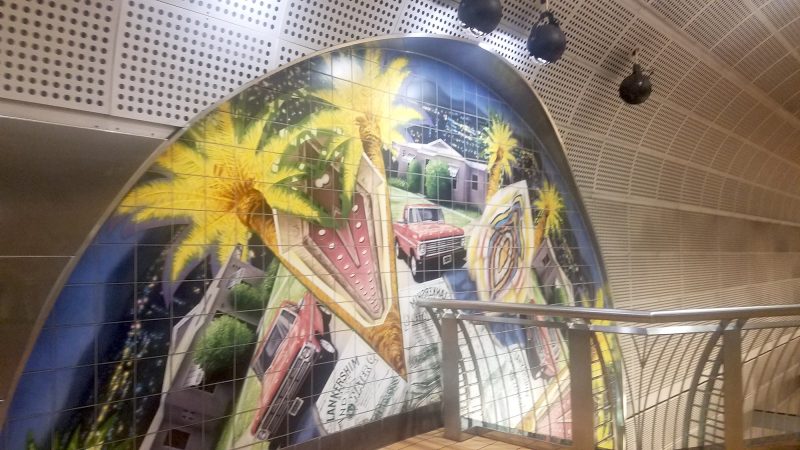
There's a total of six train lines connecting the city.

Larger stations, like 7th & Metro, Pershing Square, and Union Station, have elaborate mezzanines with food vendors.
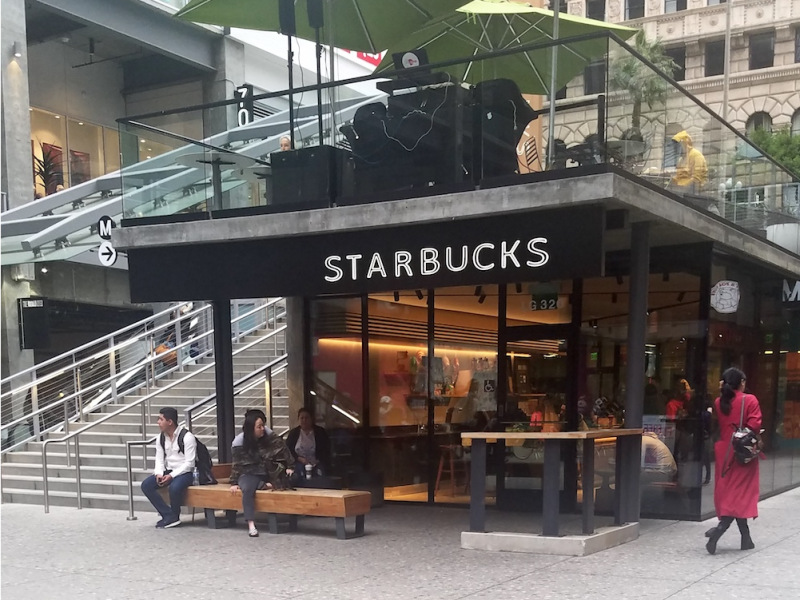
Downstairs, the platform I used was fairly clean and quiet, especially compared to my experiences with the New York subway.

The subway cars themselves are very clean and spacious, too.

The seats are spaced out and positioned in a way so you don't feel cramped.

There are several poles for standing passengers to hold onto (or do pull-ups, like one passenger I saw).

There aren't loud or overly repetitive announcements on the train, so taking note of the list of stops on the line map is super important.
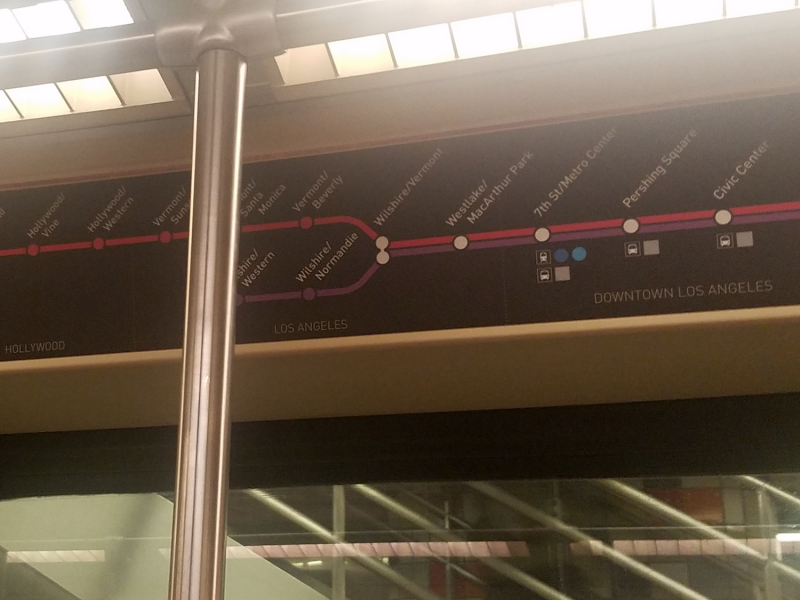
I noticed lots of posters throughout the subway system promoting the subway and stressing its importance to the city.

My overall experience riding the LA metro was enjoyable. I was surprised how easy and simple it was to get from the Valley to Downtown or the Westside.
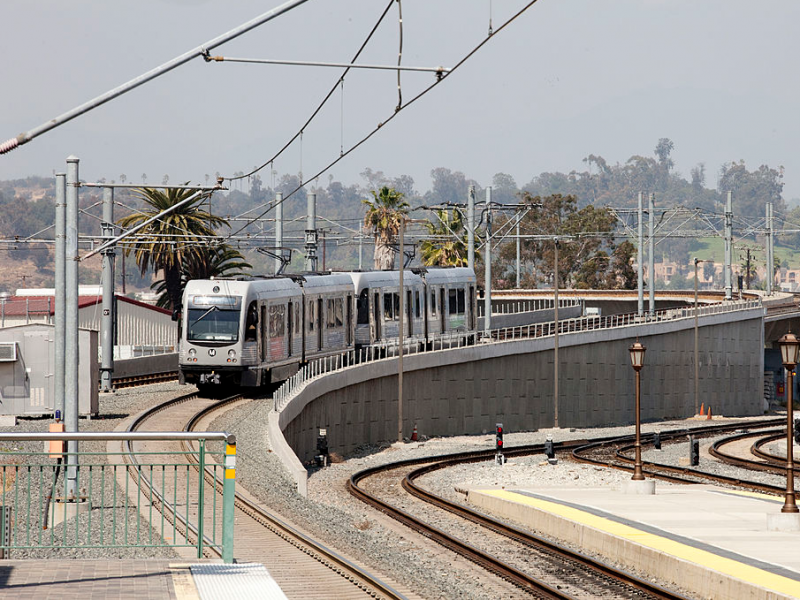
Like hundreds of thousands of other LA residents, I might just be using my TAP card more often.
